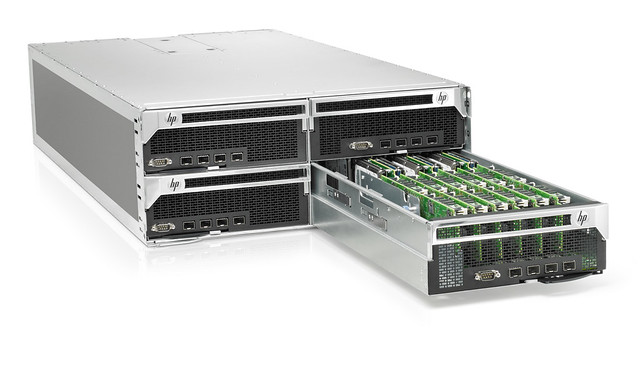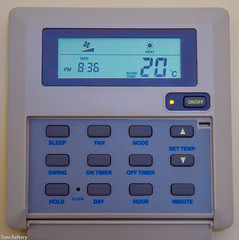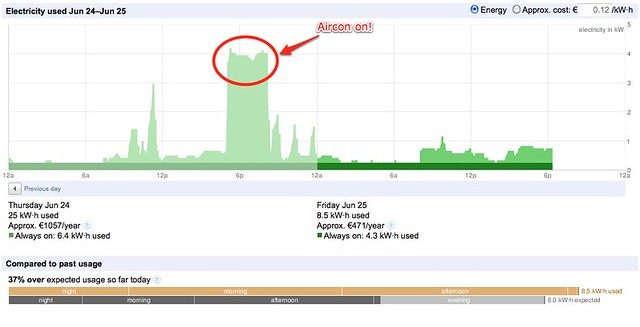Back at the start of the summer I mentioned that Sentilla had asked us to run a series of chats with data center practitioners to talk about their day-to-day challenges.
This was very much a hands-off project from Sentilla – I sourced all the interviewees, conducted all the interviews and am publishing the results without any Sentilla input or oversight. This had advantages and disadvantages – obviously, from an independence perspective, this was perfect but from a delivery point of view it was challenging. It turns out that data center practitioners are remarkably camera shy, so it far longer than anticipated to produce this series, however, finally I’m ready with the first of the series, with more to come every week in the coming weeks.
This first episode in the series is with Maxim Samo, who is responsible for managing the European data center operations of global financial services firm UBS.
Here’s a transcript of our conversation:
Tom Raftery: Hi everyone and welcome to GreenMonk?s Data Centers War Stories series, sponsored by Sentilla. This week?s guest is Maxim Samo who works for the Swiss financial services company UBS. Maxim, do you want to start off by telling us what you do for UBS and what the kind of size of your datacenter fleet is?
Maxim Samo: Yeah, I run the Swiss and European operation for UBS, at the moment we have five datacenters in Switzerland and three outside of Switzerland spread around Europe, the total size or capacity probably being around six megawatts.
Tom Raftery: Okay and what kind of age is the fleet, is it like you know the last five years or 10, or is that — it?s obviously a variety that you didn?t build all eight in the one go.
Maxim Samo: Right, it?s anywhere between — they were built anywhere between 1980 and 2004, there is a couple of colo?s that are probably newer than that, but yeah.
Tom Raftery: So if they were built starting in 1980, I mean I assume that this is one of the reasons why you think more in terms of power as supposed to space because your — they weren?t optimized around power at that time I?m sure.
Maxim Samo: Oh not at all, exactly. They were built with a density of around 300 watts per square meter or even less right, I mean they were mainframe datacenters and we kind of ? well, we did some refurbishments in there and as a matter of fact one of those datacenters is undergoing a major renovation right now to increase the amount of power that we can put in there.
Tom Raftery: Power is obviously one of the more pressing issues you guys are running up against, but what are the other kind of issues you have in the datacenters in the day-to-day operations?
Maxim Samo: So the way our datacenters are built in Europe at least within UBS is that, we don?t have like big data halls, but we have a number of smaller rooms within the datacenter building and in order to be cost effective you know we don?t have every single network available in all the rooms, we don?t have every single storage device and storage network in terms of production storage or tester development storage available in all the rooms.
So some of our constraints or else or around that we have to — not only do we have to manage the capacity, but we have to figure out which rooms the servers come in and then try to get adequate forecasts of how much the business and the developers want to put into what datacenter rooms and try to juggle the capacity around that.
Tom Raftery: We are calling the show the Datacenter War Story. So, have you any interesting problems that you came across in the last number of years and resolved any interesting issues that you hit up against?
Maxim Samo: So, in terms of war stories I guess we are — one thing is we are going to have the interesting issue about switching the electrical network of the datacenter that is undergoing renovation and we are currently looking at the options of how we can do that.
One option would be that we would switch — well, that we would put both ups into utility bypass, runoff the utility, and then switch over the network, where of course you have the risk of a power blip coming through which takes down your datacenter. So, in order to mitigate that we are also talking about a full scale shutdown of the datacenter, which right now is being received very well by the people involved, so that?s going to be an interesting one.
So we had, actually very recently we had a very funny case where we — what we do is, we conduct black star tests, black star test is when you almost, you like pull the plug and see what happens, right. So you literally cut off the utility network, your ups will carry the power, the diesel generators will start and you make sure everything works smoothly.
The last time we did this test that was a week ago on the weekend when the diesel generator started it created so much smoke that a pedestrian out on the street actually called the fire department and we had the fire department come in and lot of people were panicking and asking what is going on, we have a fire in the datacenters, like no, we just tested our diesel generators, that was a very funny instance.
I can really remember a war story in terms of the datacenter going down luckily that has not happened for a very long time, we absolutely, we probably — well, we did have a partial failure at one point where pretty big power switch within the switch gear has failed and brought down one side of the power.
However, since most of our servers and IT equipment is dual power attachsed it did not have any impact on their production.
Tom Raftery: Great, that?s been fantastic. Max, thanks for coming on the show.
Maxim Samo: All right, thanks Tom.
Disclaimer – Maxim asked me to mention that any views he expressed in this video are his own, and not those of his employer, UBS AG.






